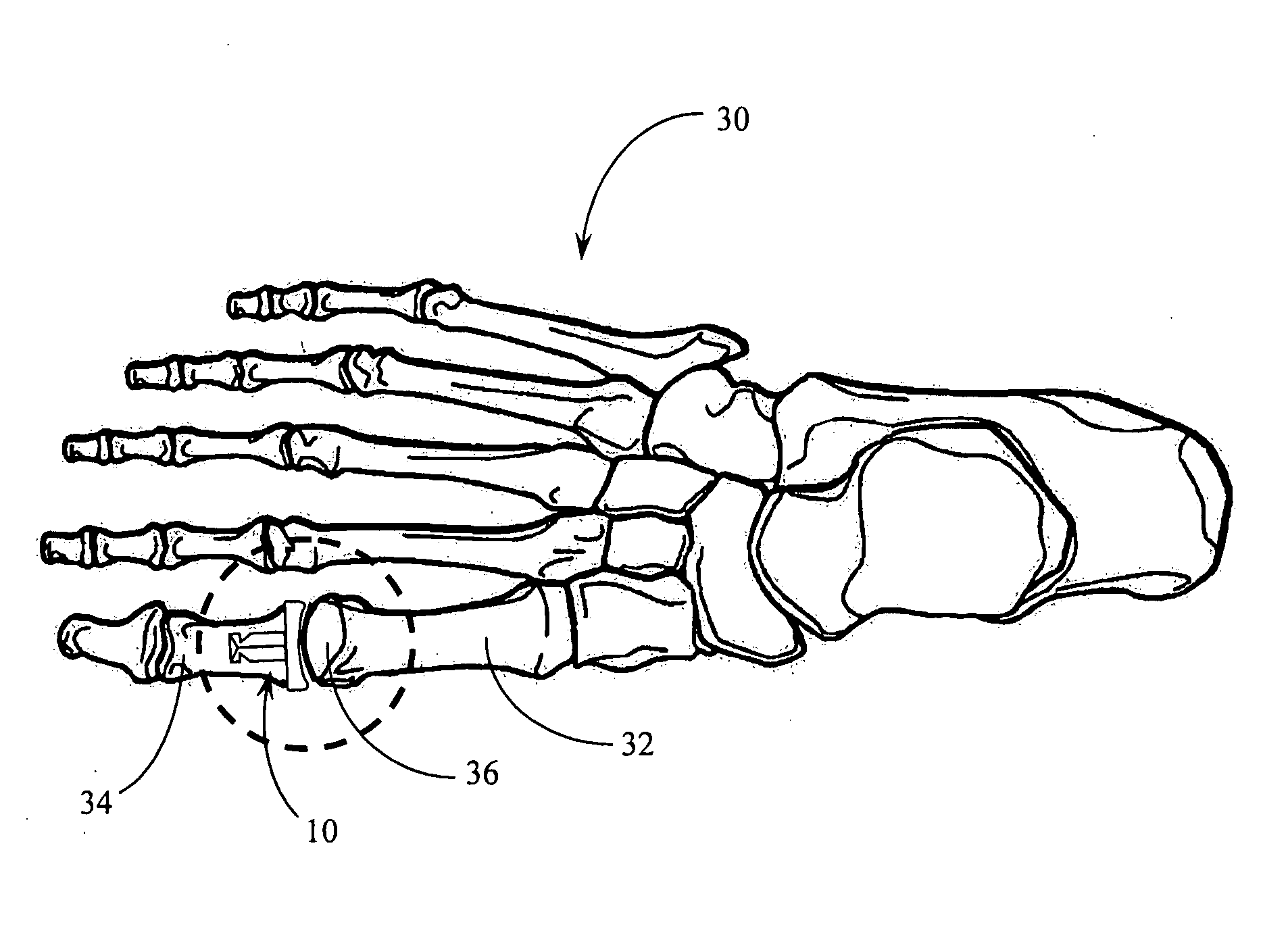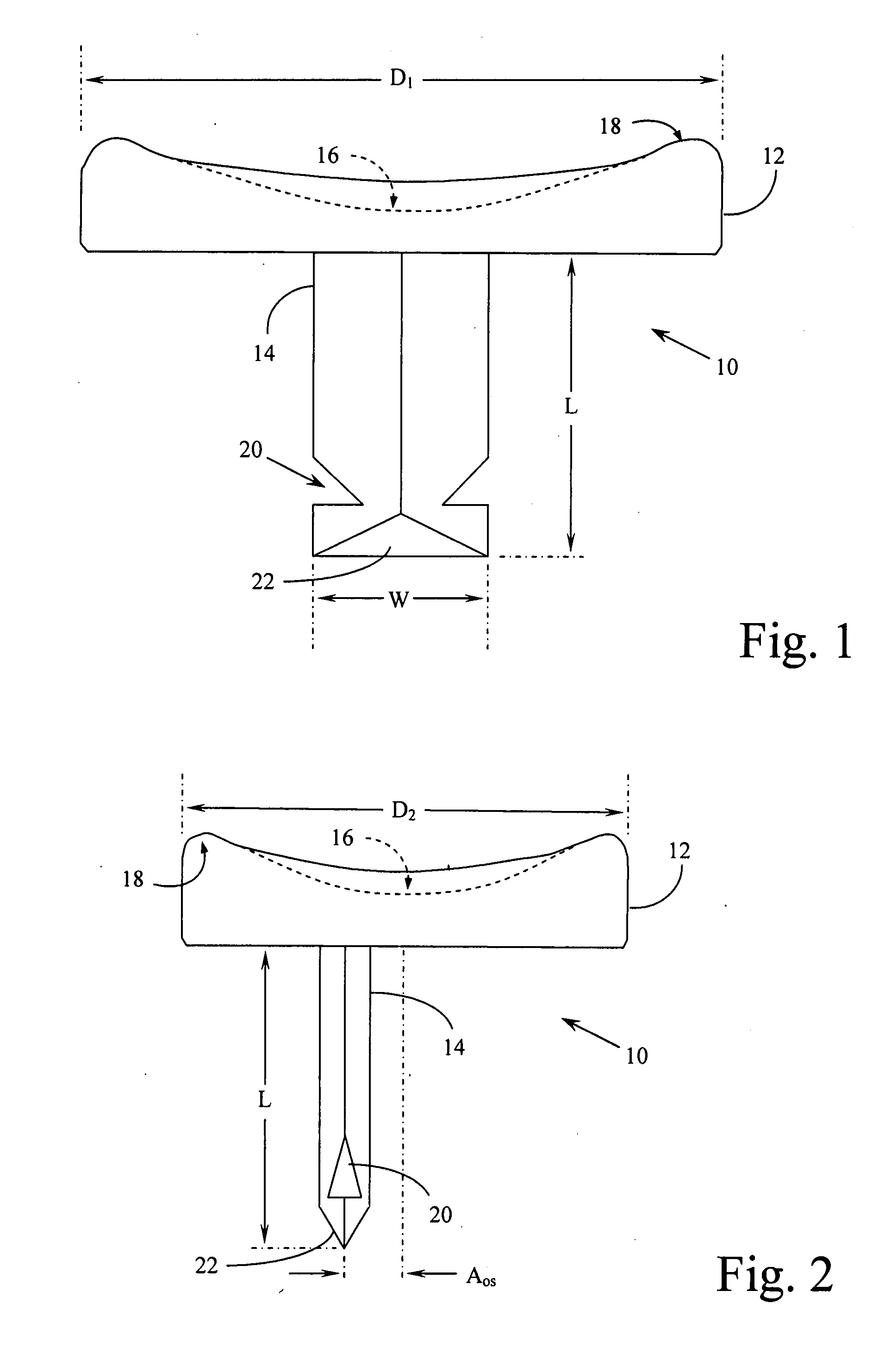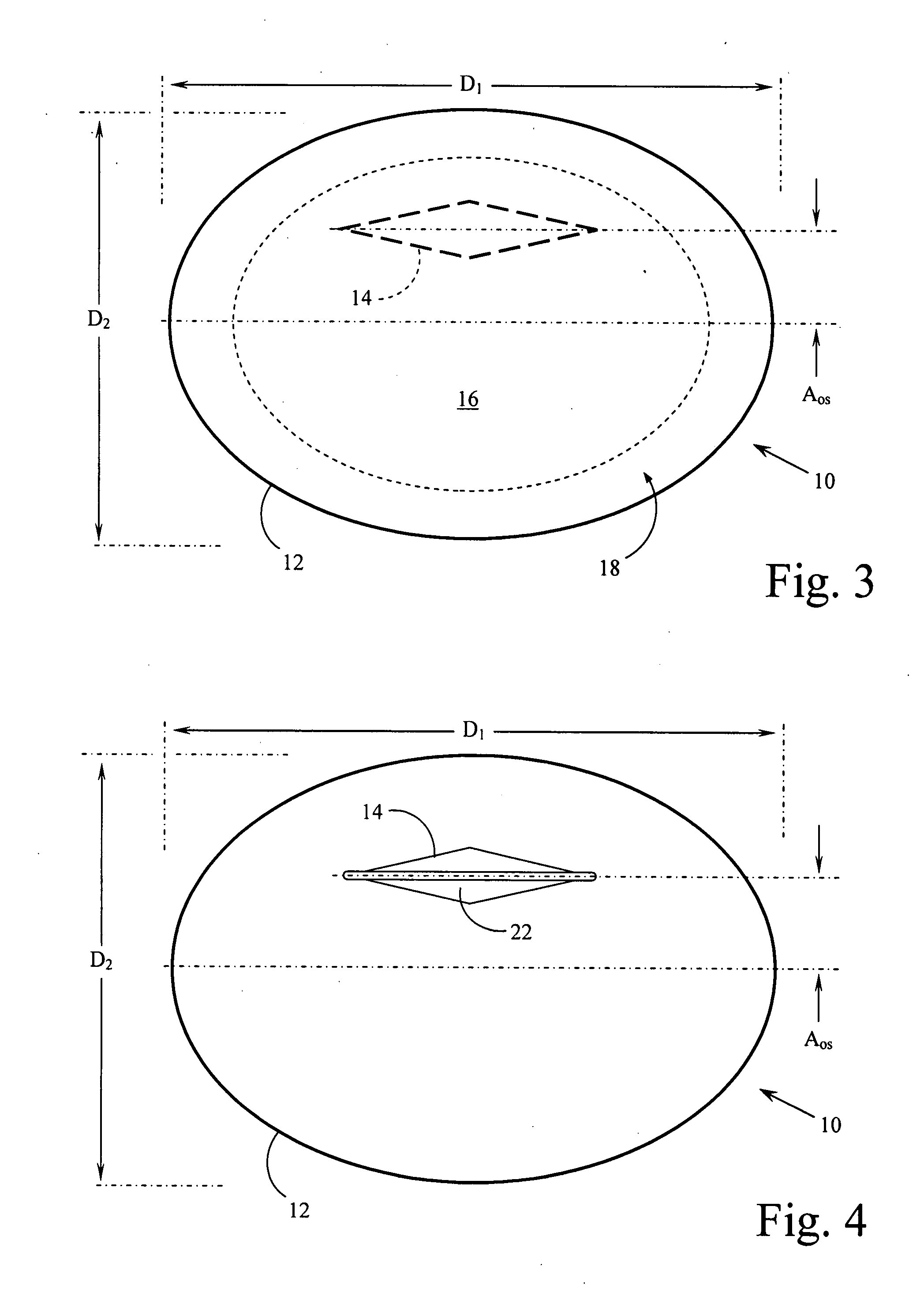Hemi-implant for first metatarsophalangeal joint
a technology of metatarsophalangeal joints and implants, which is applied in the field of partial joint replacement implants and first metatarsophalangeal joints, can solve the problems of human body damage, full joint replacement using silicone materials, and concern for its potential damage to the body, and achieves simple but effective retention structures and extended length to the stem
- Summary
- Abstract
- Description
- Claims
- Application Information
AI Technical Summary
Benefits of technology
Problems solved by technology
Method used
Image
Examples
Embodiment Construction
[0023]Reference is made first to FIG. 1 for a detailed description of the overall structure of the implant device of the present invention. As indicated above, specific structural features of the implant device of the present invention provide unique and beneficial characteristics to the device that facilitate the surgical placement of the device as well as the post-operative comfort of the patient. Implant device 10 as shown in FIG. 1 comprises two primary components, joint surface component 12 and stem component 14. Joint surface component 12 is a slightly elliptical, concave, surface platform that forms the new joint face for the prosthesis. Stem component 14 extends from the back face or back plane of joint surface component 12 and provides the mechanism whereby the implant is attached to the phalanx bone.
[0024]Joint surface component 12 is generally constructed with a concave profile to provide the contact surface for the first metatarsophalangeal joint. This surface constructi...
PUM
 Login to View More
Login to View More Abstract
Description
Claims
Application Information
 Login to View More
Login to View More - R&D
- Intellectual Property
- Life Sciences
- Materials
- Tech Scout
- Unparalleled Data Quality
- Higher Quality Content
- 60% Fewer Hallucinations
Browse by: Latest US Patents, China's latest patents, Technical Efficacy Thesaurus, Application Domain, Technology Topic, Popular Technical Reports.
© 2025 PatSnap. All rights reserved.Legal|Privacy policy|Modern Slavery Act Transparency Statement|Sitemap|About US| Contact US: help@patsnap.com



